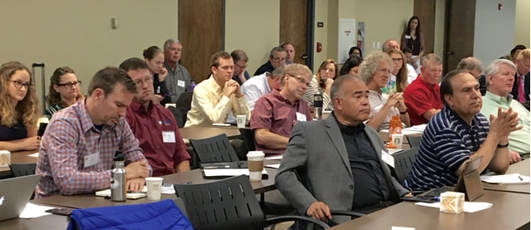
By Jill Cliburn
In recent months, I’ve had the pleasure of working boots-on-the-ground, planning for a new, MW-scale community solar-plus-storage project. It is too soon to share all the details, but Cliburn and Associates has led program-design and early-stage procurement efforts, with Extensible Energy adding tech expertise.
The utility understood its value proposition—based mostly on wholesale demand reduction—from the start. The community stakeholders also understood their value proposition, and in fact, they drove the project early on. However, we recognized that the facets of project value differ quite a lot from each perspective. We’ve fostered a good dialog, which increased understanding—and enthusiasm—on all sides. Here, I thought I would share a little more about why and how this kind of communication matters in designing community solar-plus projects—or any innovations that are part of the grid-edge revolution.
Of course, a conversation goes both ways, and community solar is also an opener for customers to express their values, explaining what "solar choice," broadening solar access, sharing benefits and achieving environmental sustainability mean to them. To be successful, a community solar offer has to address a good number of these customer concerns. The process for developing high-value community solar can build respect—and enthusiasm—on all sides. We know this is true, because we have seen it happen.
This approach, using community solar as the conversation opener and using it (as we like to say) as a market based laboratory, harmonizes with other findings from the JD Power Outlook for 2019. The report notes that customers are increasingly likely to say that their utility’s commitment to the community is a “strong driver” for their satisfaction. This could involve seeing utility folks at any number of community events or noticing that the utility supports a good cause. But guess what? Community solar is a good cause. That same JD Power report notes that 43% of electric utility customers now say they are considering solar power—and that “the biggest obstacle to adoption among the 57% who aren’t interested is cost.” Community solar is widely recognized as a solution for customers who find solar attractive, but too costly or unsuitable for their homes.
So here’s my suggestion: if you are a utility, get involved in a high-value community solar project, whether that includes strategic solar-plus-storage and companion measures or high-value solar siting and design, or special appeals for lower-income customers and other target markets. Then open up the conversation. How many other opportunities do you think you will have to explain to customers and stakeholders what a demand charge is, or how the value of resources is affected by market conditions in your region? How many other opportunities do you think you will have to hear customers express how they care about future energy choices, while they look to the utility as less of the problem and more the solution? A dialog can be a fragile thing, because it requires the maintenance of trust. But in my own experience, working on community solar across the U.S., I’ve come to understand that community solar presents a real opportunity for the elusive utility/stakeholder win-win. The value of an extended and positive exchange about community solar is, as we say, non-monetizable, and… priceless.
For more about how to set up a good communications process around community solar, see the Process section of our Solutions toolbox. If you think that begins with getting top-level approval, you may be right, but we have some resources in the toolbox to help you with that, too. Or if you would like specific or general assistance planning your community solar effort, please send a note via our Contact page.

